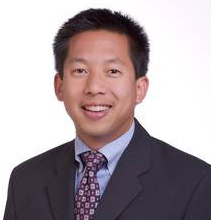By Brian Chou, OD, FAAO
By catering to patients of diverse cultures, you can improve the services you provide to patients–and strengthen your practice in the process.

Brian Chou, OD, FAAO
San Diego, Calif.
Average Age in Community:35 years
A successful business meets consumer demand. In culturally diverse demographics, providing optimal care means understanding the prevalent eye conditions and patient concerns. A nice byproduct of providing culturally sensitive care is patient loyalty. To be sure, the patient demographic in the practice’s locale drives the extent to which you can build a multicultural practice. For example, for a practice located in Plantation, Fla., (where 98 percent of the population is Caucasian), a sure-fire way to alienate its patient base would be having the phone auto-attendant say, “Para Español, oprima numero dos.” This is analogous to how you can’t build a successful glaucoma practice if the average age in the community is 35.
I’d estimate that almost half of my patients are in an ethnic minority (30 percent Asian; 10 percent Hispanic; and 5 percent African-American). The majority of my patients speak English well, but about 5 percent speak English as a second language or have little command of the language. Most of the patients who don’t speak English come in with an interpreter.
Multicultural Practice Mirrors Community
The growth of ethnic minorities in my practice tracks the overall expansion of my patient base. It helps having a multicultural staff to match the patient demographic. It is also helpful to have at least some staff with foreign language proficiency. A significant part of my patient care is devoted to prescribing contact lenses for keratoconus with some of these patients traveling from Mexico. In such cases, a Spanish-speaking employee is an incredible resource for communicating and coordinating these patients. I also use same-language materials.
For my Spanish-speaking patients with pterygia or diabetic eye disease, I use some of the Spanish-language patient education materials that are available as a free download from www.Transitions.com/PRO. I believe it is also important for clinicians to have awareness of cultural communication idiosyncrasies. For example, I have observed that my Hispanic and Asian patients are more apt to care about pleasing the OD, and as a result, can sometimes give the impression that they understand us when they do not.
Matching Health Needs with Ethnic Group
Having a multicultural practice means serving the differing eye health needs of your community’s distinct ethnic groups. Hispanic patients are more susceptible to diabetic eye disease, cataracts and pingueculae/pterygia; African-Americans to diabetic eye disease and glaucoma; Chinese to myopia; and Vietnamese to angle closure glaucoma. This knowledge helps the practitioner and staff to anticipate patient questions, concerns and topics to discuss. As another example, for a patient base with a large Hispanic presence that enjoys outdoors activities in which UV light is a concern, the practice should emphasize UV eye protection with appropriate ophthalmic products like photochromics, polarized lenses, and an extensive selection of sunglasses frames.
Multicultural Services as an Investment
Investing in multicultural resources in your practice is not so much a cost, but an investment to increase patient loyalty. Most of the investment is in time and attention. I don’t think the returns are easy to calculate in dollars because that would require analysis of spending within each cultural demographic, and I’m not aware of any common practice management software with such granular-level reporting. I view the efforts toward increased multicultural sensitivity as good community stewardship.
Resources: Transitions White Paper
The end of this Transitions-sponsored white-paper (http://trade.transitions.com/Education/Pages/Clinical_Papers) discusses multicultural communication challenges. I recently detailed ideas for making a practice multicultural friendly in a blog post for Transitions: http://trade.transitions.com/Pages/blog
Related ROB Articles
Accommodate Diverse Cultures to Grow Your Practice
Transitions Launches MAP Program, Offering ECPs Info on Local Markets
Building a Multicultural Practice
Brian Chou, OD, FAAO, is a former partner of Carmel Mountain Vision Care in San Diego, Calif., where he practiced for 11 years. He is joining EyeLux Optometry, which opens fall 2011. To contact him: chou@refractivesource.com chou@refractivesource.com.





















